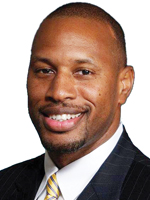How to deliver a mic-dropping closing argument
The human element of an employment case requires that you really connect with the jury
So, you survived the demurrer and motion to strike, several informal discovery conferences, avoided motions to compel further responses, and the motion for summary judgment/summary adjudication issues was denied. Now what do you do? You have to try your employment case to 12 strangers and make it all make sense. And although you have lived with the case for 21 months, you have to figure out how to make the pieces of the puzzle fit so the jury will find in favor of your client. For the tried-and-true trial lawyer, the closing argument (or summation) is where the magic occurs.
Many attorneys mistakenly believe that all they need is a beautifully prepared PowerPoint presentation and the jury will be eating out of their hands. However, a verdict-delivering closing argument is achievable if you can execute the following four points:
1) Develop a plan
2) Demonstrate your proficiency
3) Display your passion
4) Deliver on your promises
Develop a plan
The best closing arguments do not simply regurgitate the evidence to the jury. The winning arguments tell a compelling story with memorable sound bites and relatable themes. Therefore, it is essential that you invest the time to organize your game plan. That game plan will invariably be based on what happened during the trial. Some cases are witness intensive and your argument should be mapped out to highlight those important bits of testimony. Some trials have that proverbial smoking-gun exhibit you will want to have as a watermark on everything you present to the jury. Whatever the case, you must be deliberate with a particular plan for your particular case.
Demonstrate your proficiency
It goes without saying that if you have that beautifully prepared PowerPoint presentation, you need to be flawless with its execution. There is nothing more frustrating to the jury than when you have all of this wonderful technology and innovation and it does not work during the pinnacle of your persuasiveness. When you are referring to the testimony of witnesses, have your dailies ready to show the jury you are telling them exactly what happened during the trial. When you need the jury to focus on an exhibit, you should be able to show them exactly what they are looking for and why it is important. Hopefully, you will never have to fumble through your electronic database when you move from exhibit to exhibit. Your ability to present your argument seamlessly will give your argument the best chance to be the most convincing.
Display your passion
The human element of an employment case requires the need to really connect with the jury. In addition to the economic interests at stake, many litigants define themselves through their jobs and careers. When your presentation is able to show the incalculable value of self-worth, you stand that much closer to the winner’s circle. You are not just representing a client. You represent a person whose life has changed forever because of what happened in the workplace. When people think of an advocate, someone who fights for someone else, your passion will convince the jury why they must find in favor of your client. If you do not care about what happens to your client, why should they?
Deliver on your promises
You stated in your opening statement, “the evidence will show this” and “the evidence will show that” and with your closing, you can walk your jury through the special verdict as outlined. Keeping your word about the evidence accomplishes two things. First, the jury actually has a basis to return the verdict in your favor when you can point to the specific evidence. Two, if there is a conflict in the evidence, you improve your chances of receiving the benefit of the doubt because you can be trusted to say what you mean and mean what you say. The jury will remember if you indicate that something will happen and they did not see that something during the trial. In addition to delivering your promises, make sure the jury knows when the other side failed to deliver on theirs. Again, the lawyer who cannot be trusted is left with evidence the jury will want to disbelieve.
In conclusion, conclude your trial with conviction and compassion, be clear, and be courageous. If done correctly, you will be able to drop the mic when you say your last word.
Rupert A. Byrdsong

The Honorable Rupert A. Byrdsong was appointed to the Los Angeles Superior Court on June 18, 2014 by Governor Jerry Brown. He presently sits in Dept. 28 in the Stanley Mosk Courthouse in downtown Los Angeles wherein he handles an unlimited jurisdiction individual court calendar with an inventory of over 500 cases. Prior to coming to Mosk, Judge Byrdsong was the first African-American in the Complex Civil Department wherein he handled and coordinated all of the asbestos cases in Los Angeles County. Judge Byrdsong volunteers his time mentoring young lawyers and speaks to students in high schools, colleges, and law schools throughout Los Angeles. He also volunteers his time to interview prospective students for Vanderbilt School of Law. Judge Byrdsong is active with the John M. Langston Bar Association (lifetime member and past president 2006), the California Association of Black Lawyers (CABL)(lifetime member), LACBA’s Labor and Employment Executive and Saturday Seminar Committees, and a Founding Member of the Association of African American California Judicial Officers (AAACJO). He served on the Executive Committee of the Labor and Employment Section for the State Bar of California from 2003-2007.
Copyright ©
2025
by the author.
For reprint permission, contact the publisher: Advocate Magazine
